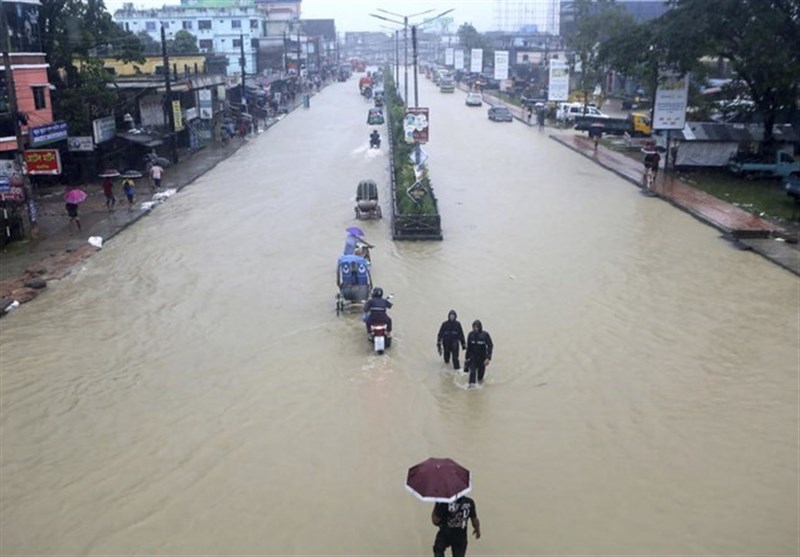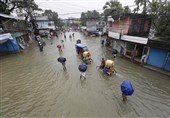25 Killed in Bangladesh Monsoon Floods (+Video)
TEHRAN (Tasnim) – Monsoon rains in Bangladesh killed at least 25 people and unleashed devastating floods that left more than four million others stranded.
Lightning strikes during monsoon rains killed 21 people around the South Asian nation since Friday while four others died in landslides triggered by the storms, district police officers said.
The Bangladesh military’s Inter Service Public Relations office said on its website early on Saturday that soldiers were deployed as floods have devastated the northeastern districts of Sunamganj and Sylhet where thousands of homes have been inundated and electricity has been cut.
In a statement, the government’s Flood Forecasting and Warning Center in Dhaka, the nation’s capital, said on Friday that water in all major rivers across the country is rising. The country has about 130 rivers.
The centre said the flood situation is likely to deteriorate over the next 24 hours in the worst-hit Sunamganj and Sylhet districts in the northeastern region as well as in Lalmonirhat, Kurigram, Nilphamari and Rangpur districts in northern Bangladesh.
Hafiz Ahmed, manager at the Osmani International Airport in Sylhet, said that flight operations in the airport have been suspended for three days from Friday as flood water had almost reached the runway.
Last month, a pre-monsoon flash flood, triggered by an onrush of waters from upstream India’s northeastern states, hit Bangladesh’s northern and northeastern regions, destroying crops and damaging homes and road network.
Bangladesh was only recovering from that shock, when this year’s monsoon set in only a few days ago bringing fresh rains that have flooded the same regions again.
A nation of 160 million people, Bangladesh is low-lying and faces threats of climate-change-related natural disasters such as floods and cyclones. According to the UN’s Intergovernmental Panel on Climate Change, about 17 percent of people in Bangladesh would need to be relocated over the next decade or so if global warming persists at the present rate.







